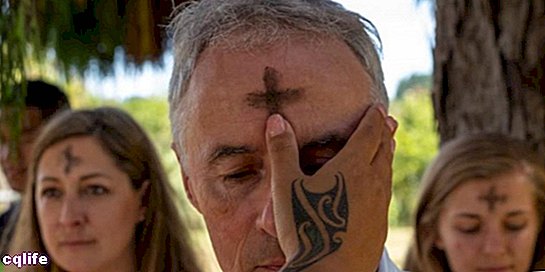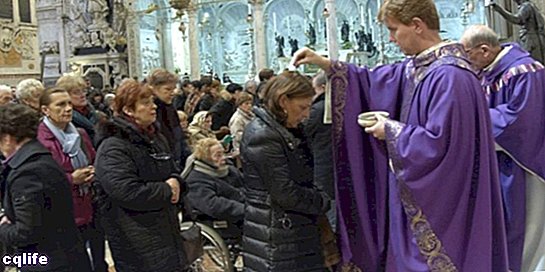We explain what Lent is for Christianity, its meaning, origin and symbols. Also, start and end dates.

What is Lent?
It is known as Lent to a liturgical time established in the Christian calendar and celebrated by the Catholic, Coptic, Orthodox, Anglican Church and many Protestants (although in their own way). This period consists of a time of penance and spiritual preparation for Easter, which takes place during the previous 40 days (hence its name, from the Latin quadragesima).
Lent always begins every Ash Wednesday, after Shrove Tuesday. On Ash Wednesday, the churches carry out the rite of anointing the faithful with a cross of ashes on their foreheads, a gesture that symbolizes the purging of the sins of the previous year.
Similarly, it culminates every Holy Thursday afternoon, three days before Easter Sunday, the date on which the Last Supper of Jesus Christ with his disciples and the washing of his feet at the hands of the prophet are commemorated.
The duration of Lent is due to different biblical and Christian references, such as the 40 days of Jesus Christ spent in the Judean Desert, before undertaking his public mission, but also the 40 days of the universal flood, the 40 years of the march of the people of Israel and the 40 decades of slavery of the Hebrews in Egypt.
Lent is not a time of grief, however, but of recollection and reflection. According to the different churches that celebrate it, it is usually commemorated with masses and prayers, as well as a fast from dawn until night, during Ash Wednesday and Good Friday, or during the 40 continuous days, in its more versions. strict.
They do not usually eat meat, eggs, butter, or fish, and in some churches wine and oil are also forbidden. In some cases, abstinence and seclusion are also practiced, although in most Western churches the penitential aspect of Lent has become increasingly lax.
Origin of Lent
There are indications that Lent began to be celebrated around the second or early third century, but in the fourth century it officially became an ecclesiastical practice, even though it was not part of the First Council of Nicaea in 325.
It was rigorously practiced by candidates for baptism and by those whose sins caused them to lose their place in communion. At that time they had to grieve and repent, wearing rags and being scattered with ashes. But this tradition it died around the ninth century, being replaced by the common celebration of the faithful that we know today.
However, throughout its history, Lent underwent many modifications by the Church. For example, the Sundays of the Lenten fast were abolished, as they are traditionally festive days, dedicated to the commemoration of the Lord; and to preserve the 40-day figure, four more days were then added before the first Sunday.
Symbols of Lent

Lent is associated with different symbols, some of which have already been mentioned.
- The ash cross. It represents the "burning" or purging of pre-Lenten sins, so that the parishioner is ready and clean for baptism and reunion with Christ.
- The color purple. This is the color of the Nazarene, that is, the color of the robes that Jesus Christ wore during his Calvary, and therefore it is associated with penance and suffering. It is used except for the fourth Sunday, which is replaced by pink, and on Palm Sunday, which is replaced by red.
- The cross. The universal symbol of Christianity, takes on even greater prominence in Lent, since it is the advent of Jesus Christ to Jerusalem (an event that is properly commemorated during Easter).
When does Lent begin and when does it end?
As mentioned before, Lent begins every Ash Wednesday and ends every Holy Thursday afternoon. According to the current calendar, in the coming years these dates will be:
- In 2021, Lent begins on Wednesday, February 17 and ends on Thursday, April 1.
- In 2022, Lent begins on Wednesday, March 2, and ends on Thursday, April 14.
- In 2023, Lent begins on Wednesday, February 22 and ends on Thursday, April 6.
- In 2024, Lent begins on Wednesday, February 14 and ends on Thursday, March 28.
- In 2025, Lent begins on Wednesday March 5 and ends on Thursday April 17.
- In 2026, Lent begins on Wednesday, February 18 and ends on Thursday, April 2.
- In 2027, Lent begins on Wednesday, February 10, and ends on Thursday, March 25.
- In 2028, Lent begins on Wednesday, February 17, and ends on Thursday, April 1.
- In 2029, Lent begins on Wednesday, February 14 and ends on Thursday, March 29.
- In 2030, Lent begins on Wednesday, March 6, and ends on Thursday, April 18.
- In 2031, Lent begins on Wednesday, February 26, and ends on Thursday, April 10.
